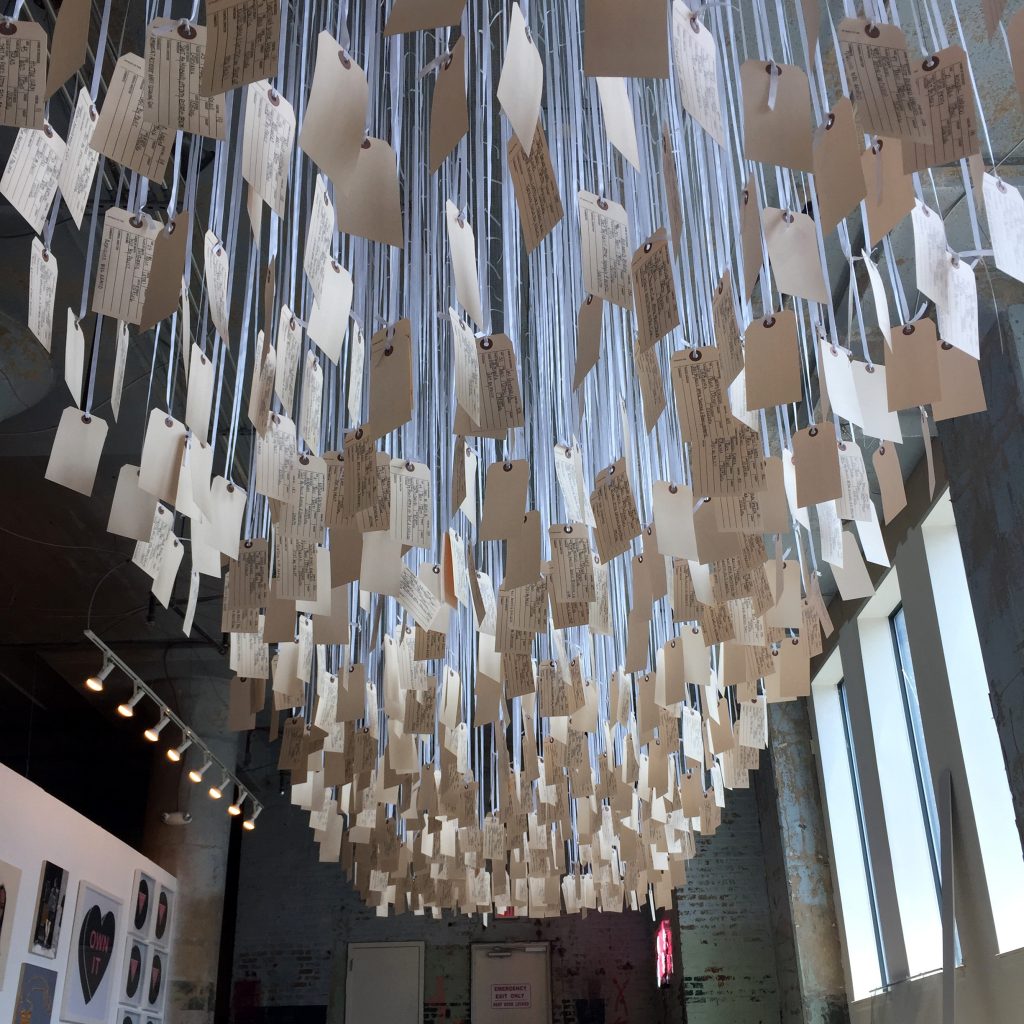[vimeo]https://vimeo.com/176033779[/vimeo]
When pressure builds to the point of implosion, a shift of consciousness is known to occur. Movement in our global consciousness has surfaced, and artists are confronting important issues. Whether it be Ocean Contemporary’s, Bitteres Wasser (“Bitter Waters”) in Berlin or Korean artist, Kim Taeyoun’s, “plastic island,” both of which address the alarming state of plastic waste in our waters; or Nona Faustine’s “White Shoes” project in USA, there are much needed voices to advocate for public awareness. Hopefully, these voices will help ignite radical social change world-wide.
Brewing anarchy has always been woven into the fabric of society. And now, in response to this dissension, the artist’s voice is being heard. Race and Revolution, an exhibition curated by Katie Fuller, represents several of these voices. For years, Katie has been researching racial injustices in our culture, and as an educator she has passed this information on to her students. She began preparing for Race and Revolution in 2015, her efforts culminating in a collective of eight artists from various backgrounds. These artists will share their work with the world, addressing cultural and social injustices in our society. Ann Lewis and Michelle Angela, two of the eight featured artists, are currently exhibiting at the 2016 Democratic National Convention in Philadelphia.
The artists in this exhibition were chosen for several reasons; they belong to different geographical demographics, they possess varying cultural and ancestral backgrounds, and they were already creating works that explore social and political issues. Race, genocide, historical trauma, disenfranchisement and community are among the subjects these artists address. Katie Fuller
Race and Revolution: exploring human injustices through art will open August 3, 2016 and will remain open through September on Governors Island in New York City.
Katie Fuller on Race and Revolution:
Authors often say they write because a story has been building inside of them and can no longer be contained. Race and Revolution is that story that could no longer be contained inside of me. Though I started planning the show last summer, I have been researching racial injustices in the United States for years, especially as these injustices have been dictated by leaders, law enforcement, and constitutional law. And, yes, by “researching,” I mean that I have been able to hide behind the safety of my white privilege; I have been able to read about specific events and atrocities while not actually knowing what that pain felt like. To feel that pain and to then embody centuries of murder and betrayal endured by ancestors and with no end to these injustices in sight . . . all I can say is I acknowledge it and am disgusted by it.
I am a teacher. For eleven years I taught classes on activism and civil rights without stepping foot onto the front lines of activism. Teaching can be a form of activism, but there came a point when it was no longer enough. That time came around the murders of Michael Brown, Eric Garner, Freddie Gray, and the subsequent acquittals of the police officers who killed them. It specifically came to me when I was prepping for a class on the Fourth Amendment. I chose to play the car-camera footage of Sandra Bland being assaulted by a police officer, in clear violation of her Fourth Amendment rights.
I showed that video to teenagers, and had to explain to them that nothing happened to this police officer and that Sandra Bland was found dead in her cell. I had to point objectively to the many instances when the officer ignored Bland’s rights to be protected from “unreasonable search and seizure.” I felt shame for a country I knew wouldn’t protect many of the students in my classroom because they are people of color. I felt helpless. But I could not just shrug my shoulders at the situation. I had to do something.
Race and Revolution became a platform for me to use my understanding of historical events and knowledge of historical documents—gained through teaching—to present history alongside contemporary art. The pieces submitted for the exhibition act as a response to the documents I’ve selected. These documents were written by George Washington, John Adams, and Thomas Jefferson to name a few, and all bring the racist language of these legends to the present-day dialogue about racism and white privilege. The objective is to show that this country was founded on racist ideologies and these ideas have bled through the generations, creating a festering sore that is, once again in this country, set to explode.
I delved into hundreds of murders, conflicts, heinous acts. I learned the details of each individual death. I went into the project expecting my abhorrence for police to be justified, and it actually wasn’t. I was actually more taken by how terribly violent our society is, of which of course, the police are a part. Ann Lewis
Featured artist: Ann Lewis, USA. …and counting. Currently on display at 2016 DNC. Toe tag installation.
Katie Fuller, USA, and Ron Shelton, USA, contributed to this story


